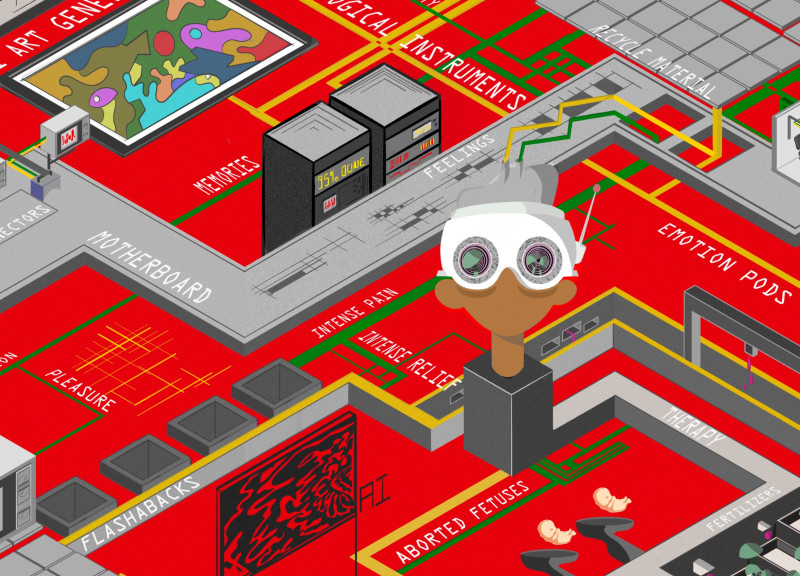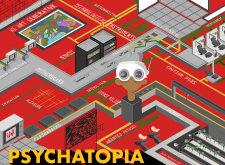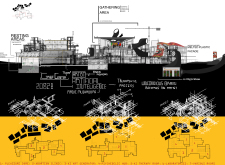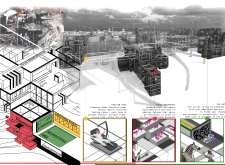5 key facts about this project
Psychatopia encompasses diverse functional areas including AI art generation studios, therapeutic emotion pods, and spaces for personal reflection and healing. Each zone is meticulously designed to facilitate specific emotional experiences, allowing users to navigate a range of feelings. The integration of natural elements, along with advanced technological features, forms a cohesive environment aimed at enhancing psychological healing.
Unique Design Approaches
Psychatopia distinguishes itself from conventional architectural projects through its focus on emotional interactivity and unconventional subject matters. The design draws inspiration from varied architectural styles, merging elements reminiscent of historical movements with a modern sensibility. This approach results in a fluid, organic aesthetic that encourages exploration and participation.
The project utilizes materials such as unrecycled plastic and metal frameworks which not only provide structural integrity but also reflect environmental considerations. The melted plastic façade emerges as a signature feature, presenting both a novel visual element and a conversation starter regarding sustainability practices in architecture.
The inclusion of sensitive spaces such as a pleasure dome and an abortion clinic highlights the project’s intent to confront societal taboos and encourage open dialogue on complex emotional issues. This strategic design decision positions Psychatopia as a unique model for future urban developments aimed at addressing mental health needs.
Architectural Functionality and Integration
The functional aspects of Psychatopia are illustrated through well-defined zones that cater to varied user experiences. The AI art generator encourages creativity while the emotion pods are specialized rooms designed for users to immerse themselves in specific emotional states. The layout promotes both privacy and communal interaction, enabling users to select their level of engagement with the space.
Elements such as the magic mushroom farm integrate agriculture into the design, reinforcing the notion of interconnectedness between nature and mental well-being. This innovative use of space constitutes a departure from traditional design paradigms, advocating for a holistic approach where architecture serves as a facilitator of psychological health.
For an in-depth understanding of Psychatopia, including architectural plans and detailed sections, readers are encouraged to explore the complete project presentation. By examining the architectural designs and ideas, one can gain further insights into how this project redefines the role of architecture in promoting emotional well-being and societal dialogue.


























